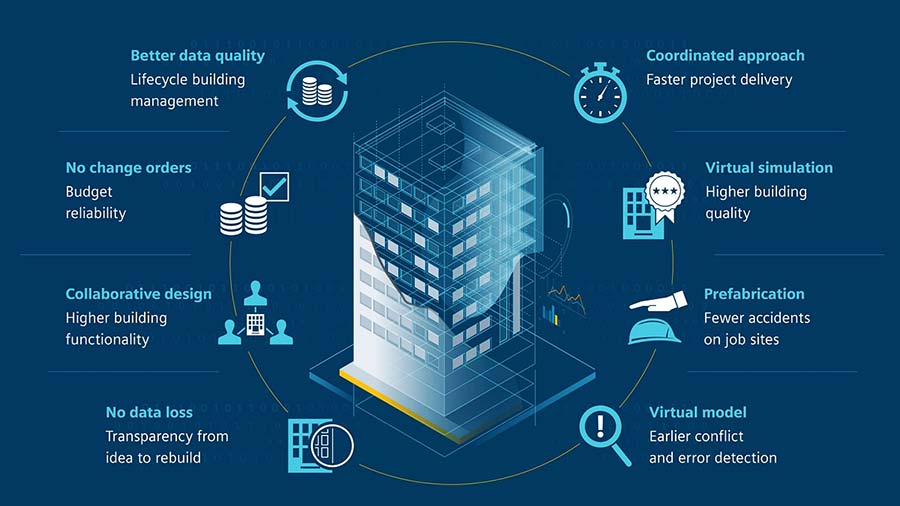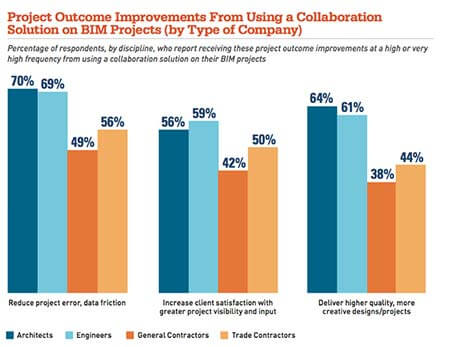
Success of a building construction project is assured when engineers, architects, contractors and all the stakeholders are in coordination with each other. Thus, construction firms rely on enriched BIM models to achieve greater inter-disciplinary collaboration for efficient decisions.
Dailymail, reported about the construction of a 57 story skyscraper built in 19 days at the rate of three floors per day in China.
This is exactly what the construction industry demands and it calls for establishing collaboration and coordination amongst all the disciplines of construction: Architectural, Structural and MEP.
Since MEP layouts have traditionally been inserted into the architectural and structural plans, professionals delivering MEP BIM modeling services can effortlessly develop coordinated models.
No building construction project can be successfully accomplished with biasness towards any certain discipline. It needs equal importance from the engineers, architects and construction firms to ensure the on-time project completion owing to their inter-dependency between each other.
Thus, to build the structure of appropriate strength and to serve its intended needs, the professionals from all these three disciplines need to understand each-others’ and project requirements and technicalities. The coordination and coherence among these disciplines eases the activities on site and reduces a lot of unnecessary man-material traffic.
Architectural Firm saves time by creating BIM models
An architectural firm in the UK faced challenges in identifying building design connection between all the elements.
Project engineers at Hitech CADD Services studied the technical drawings and developed BIM model with little rendered properties using Revit®, Navisworks® and 3Ds Max®.
Business Impact:
Engineering requirements of the building obviously compliment the planned design and aesthetics. But sometimes it also goes the other way round, which calls for design alterations to meet engineering requirements.
Erecting columns should not hamper the view in the areas where architects have designed a hall. BIM can help you take such decisions very effectively.
Such a case invites a consensus on design changes between both the stakeholders with informed decision making capabilities. BIM helps in coordinating architectural and structural plans and resolve the hard clashes between their plans through CDE.

The need to establish coordination amongst these two disciplines is pretty straight forward as the continuous MEP layouts, like an elevator slot, cannot be designed if it is intercepted by a structural element.
On the other hand the installation of MEP components cannot be done without knowing the strength of the structure. Since the installation process requires a lot of drilling and hammering, the MEP engineer needs to inform the workmen about the structure’s strength in the area to be drilled or hammered.
BIM plans and maps out the feasibility of MEP layouts according to structural and architectural designs. Revit clearly shows an error message right during modeling when there is interference in the designs
Designs and aesthetics walk into picture the moment architects are involved. Thus, when an MEP contractor’s workmen installs equipment, a large floor area is needed to accommodate big sized compressor units, boilers, HVAC ducts, drainage pipes, and other fixtures.
Engineers plan the layouts maintaining the designs provided by the architects. The concealing of pipes and wires is a result of maintaining the requirements of both these disciplines. Also, while installing these units MEP engineers have to take care of optimum resource utilization and the facades of the building.
Though engineers are the one to take a call for installation, their decisions should comply with the design and accommodate them.

BIM helps in integrating the information for these three disciplines required to achieve the needed coordination. The Level of Detailing – LOD 100 to 500 as per IFC and COBie standards help in generating schedules, estimating the requirements, and combining these three sets of information and design and plan without any clashes in the layout or the activities.
COBie is a standard for this information exchange, basically a datasheet related to space and equipment and the parts in the building that helps in managing the facility. BIM platforms used across the AEC industry helps generating information-rich 3D models and carry out enhanced construction work with lower costs, delays and higher quality and safety.
Without BIM, achieving coordination among architectural, structural and MEP disciplines is nearly impossible as it will not deliver desired results. This makes the use of BIM a need, and not an advantage. Projects may start on time but completion will be highly uncertain because of the hurdles encountered on site.
But, today in 2019, with only about half the industry using BIM for their projects in countries like The U.K. and Japan, as reported by international BIM survey by NBS, the wonders reported by Dailymail seems blurry.
You may also like
Top Sheet Metal Design Outsourcing Companies in 2024
Understanding Digital Twins in AEC: A Comprehensive Overview